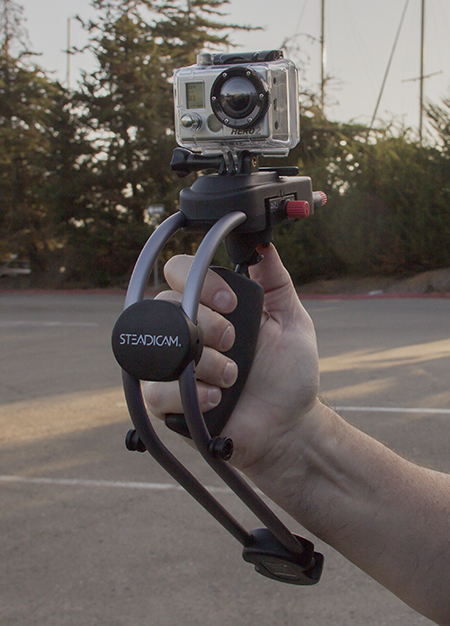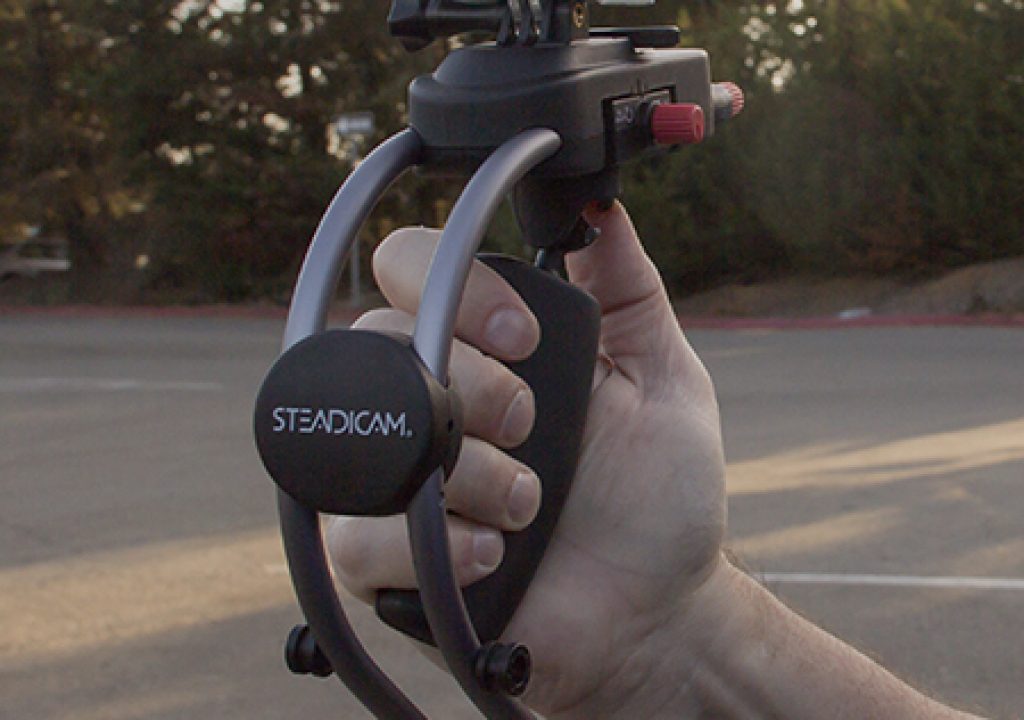
After struggling with homemade handheld rigs for my GoPro Hero2, I had the opportunity to use the Steadicam Smoothie in various shooting scenarios and after some practice, I believe it's the only way to shoot handheld with the GoPro or your iPhone. I only tested the GoPro Hero mount, but there seems to be a lot more information available online using the iPhone 3Gs or iPhone 4 mounts. I found the results from the wide angle FOV from the GoPros I tested to be more forgiving overall than much of the iPhone footage examples I've reviewed. *Note: at the time of this review, Steadicam had announced the release of the new iPhone 5 mount.
Setting up the Smoothee
Although perfectly balanced when set-up, the Smoothee does take some practice shooting – especially outdoors where the slightest breeze or quick motion can send it rocking or swinging. I've tested mounting and balancing several configurations of the GoPro Hero cameras and accessories and they all seemed to adjust and balance just fine. This included the Hero2 with and without the LCD or WiFi BacPacs, as well as the new Hero3 both with/without the LCD BacPac. Even though the Hero3 is thinner and lighter, there is still enough adjustment int he Smoothee to allow for it to be configured.
First, you must attach the GoPro to the quick release mount, then attach it to the Smoothee baseplate.
The GoPro Hero2 attached to the quick-release plate
After the camera is mounted you will need to adjust the balance of the unit using the red knobs located on the base. The knob on the back of the base is for front/back balance adjustments while the knob on the side of the unit is for left/right adjustments.
Use the adjustment knobs to balance the Smoothee
To gain more control over the swing and sway of the unit, you can adjust the counterweight on the front of the unit which doubles as the nameplate. I found this is helpful especially since the Hero2 with a BacPac does make it feel a bit top-heavy.
Adjust the nameplate/counter-weight on the front of the Smoothee to help compensate for swinging
Shooting with the Smoothee
Again, like any handheld stabilizing rig, it takes a great deal of practice to get really proficient with the Smoothee. The instructions say you can use your second hand to help keep the unit from spinning or swinging or you can use your thumb to gently add a little pressure to stabilize it on the gimbaled handle. There is no built-in drag or dampening, so it must be done manually. I've found that any contact with the Smoothee other than the balanced handle can produce sudden jolts or jogs in the video footage – even just using your thumb if you're moving quickly or outdoors with a slight breeze and you're trying to keep it from spinning around or swinging/rocking.
You will need to use your second hand or your thumb to help stabilize the Smoothee on the gimbaled handle
Here are some video clips and comparison tests I've shot with both the GoPro Hero2 and Hero3 cameras:
While the Steadicam Smoothee may have its limitations in all handheld shooting situations, it's still much better than merely holding the camera by itself or even on a frame/DSLR cage or rig, as it doesn't have the typical side-to-side or front-to-back pitch and yaw issues that cause distortion with the small sensors that seem to magnify sharp movements. Once you get any swinging or sway under control (it usually takes several practice passes per shot) then you get really smooth results. For the price, it's definitely hard to beat and will indeed pay for itself the first time you use it in a real world production. With the resolution of the new GoPro Hero3, I've already planned for some production shots in upcoming projects.
*MSRP $169.99 for either the GoPro Hero/Hero2 mount (also works with Hero3) or iPhone 3Gs, 4s, 5 or iPod Touch and the Flip MinoHD. The Steadicam Smoothee is available through many professional online retailers and pro photo/video stores.
_________________________________________________________________
Jeff Foster is a published author of several how-to books and training videos in the motion graphics, animation and video production industries and is an award-winning video producer and artist. Visit his web site to learn more about his training methods, tips & tricks at PixelPainter.com

